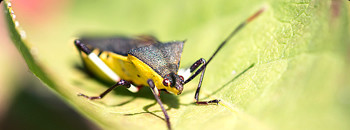This spring season, help promote a healthy ecosystem by learning to identify and control damaging plants and insects in your yard. Information about common invasive species and backyard invaders is now being offered by Responsible Industry for a Sound Environment (RISE):
Invasive Plants
Invasive weeds can out-compete native species, changing the local ecosystem. Many varieties, first introduced as flora to plant in gardens, can be confused with similar, native varieties. Here are two common damaging ones to watch out for:
- Purple Loosestrife, native to Europe and Asia, is found in most states. One plant can produce more than two million seeds annually.
- Native to China, the Tree-of-Heaven was widely planted as an ornamental plant for many years and is often confused with other trees having similar leaves, such as black walnut, butternut, and most sumac.
Invasive Insects
Invasive insects can also have a severe negative impact on native species by out-competing them for food and resources. Many also cause and carry disease and prey on native species. Two common ones to look out for include:
- Emerald Ash Borer, native to Asia, is prominently found across the Northeast, Midwest, and Southeastern United States. The larvae do the most damage, killing ash trees by feeding on the inner bark.
- Zebra Mussel, native to lakes in southern Russia, is found in hundreds of waterways throughout the United States. The species commonly clog water intakes, damage boats, and can cause cuts and scrapes if they grow on rocks, swim rafts, and ladders.
Backyard Pests
Did you know native plants and insects can cause damage too?
- Ticks can transmit Lyme disease and Rocky Mountain spotted fever. Left untreated, Lyme disease infects the joints, heart, and nervous system. After time spent outdoors, check for ticks, especially in and around your ears, inside your belly button, behind your knees, around your waist, on your scalp, and in your hair.
- Mosquitoes can carry West Nile Virus. While most people may show few symptoms, 20 percent of people develop a fever along with headaches, body aches, joint pains, vomiting, diarrhea or rash, according to the Centers for Disease Control and Prevention. Follow the “five Ds” to protect yourself: Drain standing water; Stay indoors at Dusk and Dawn; Dress in long sleeves and pants; and use DEET-based mosquito repellent.
- Poison ivy, poison oak, and poison sumac can lurk in backyards. Almost 85 percent of people develop a rash when they come into contact with these weeds. Control poisonous weeds long-term by carefully digging out the plants while wearing waterproof gloves or treating with a pesticide.
Defend your local ecosystem by identifying exotic plants in your garden or yard. Spot invasive weeds and insects in your area? Let your county extension office know, which may have a monitoring and management program in place.
By being aware of invasive species and other pests in your area, you can help support native species and a healthy ecosystem in your own backyard and neighborhood.

